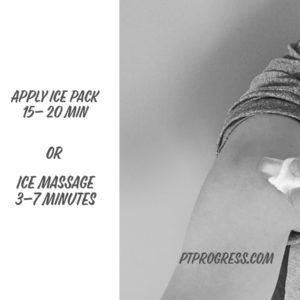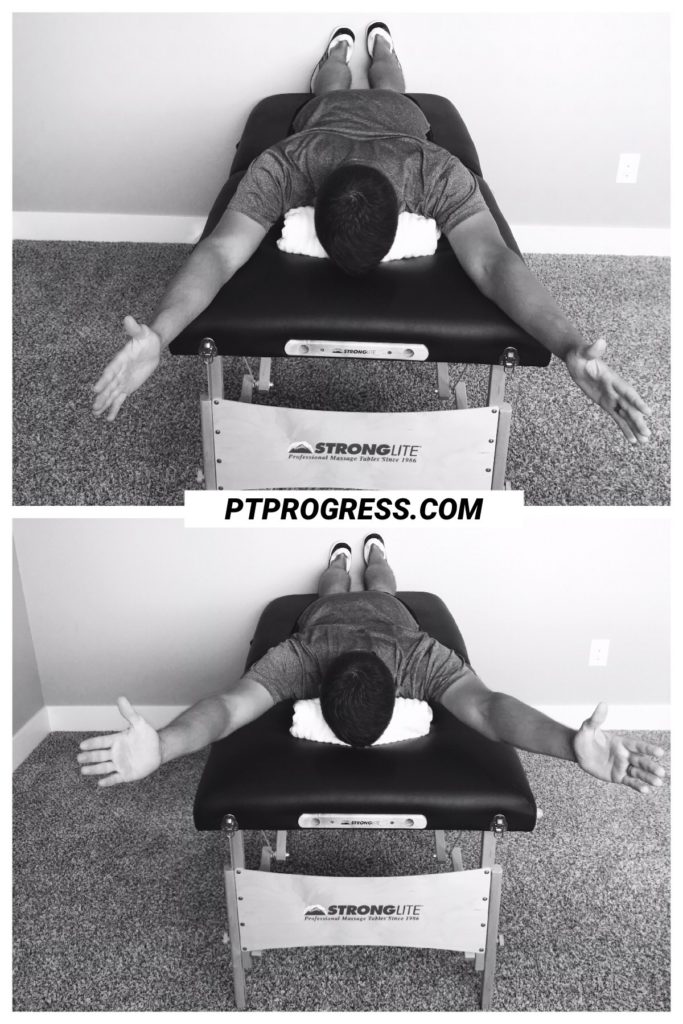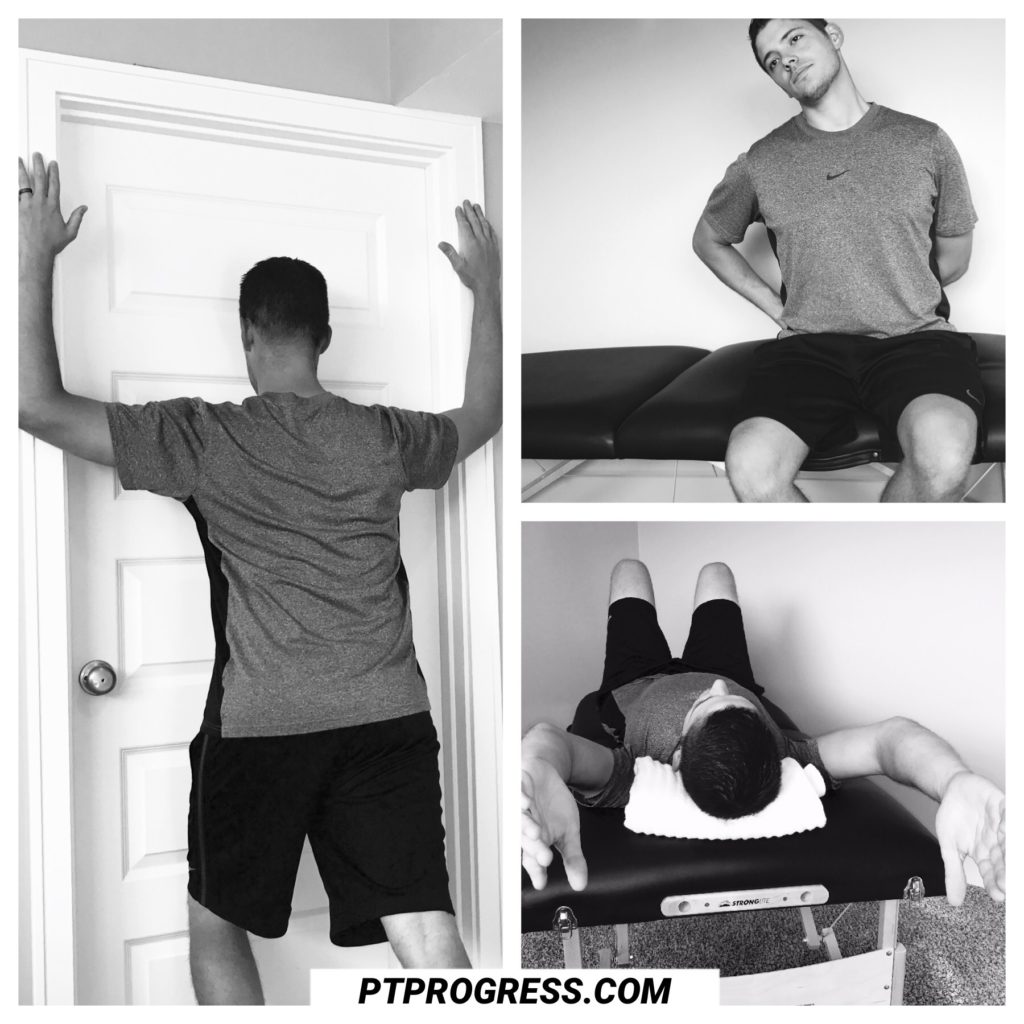
So What Can You Do For a Sore Shoulder?
As a Physical Therapist, I treat dozens of people with shoulder pain each week. While everyone’s case is different, I’ve found a few exercises and stretches to be generally helpful for many of my patients with non-surgical shoulder pain.
Here are 6 things you can do today for your sore shoulder.
- Ice and Ice Massage
- Trigger Point Release
- Scapular Stabilization Exercises
- Kinesiology Tape for Shoulder Support
- Safe Neck and Shoulder Stretches
- Herbal Remedies for Shoulder Pain
Keep reading to see how you can mix these 6 ideas into your daily routine.
How Do You Treat a Sore Shoulder?
If you’ve been provided with prescription or over the counter medication such as Tylenol or Ibuprofen, follow the instructions from your doctor.
Other treatments for a sore shoulder may include: applying ice and compression for 20 minutes, rest and elevation, scapular strengthening, trigger point release, kinesiology tape for support, upper trapezius stretches, and herbal remedies.
Let’s start with ICE, ICE, BABY…
1. Ice and Ice Massage
Applying Ice to the shoulder for 20 minutes is the most common answer you will see for decreasing shoulder pain. Along with rest and elevation, ice massage can also be an effective way to decrease shoulder pain.
Freeze water in a small paper cup so you can tear the bottom of the cup to expose the ice. You can also take an ice cube and wrap it in a paper towel like I’m doing in the picture. Gently rub the ice against the area of tenderness using a small circular motion. As you do this for approximately 3 to 7 minutes, you’ll move through the following sensations: Cold, Burn, Achey, Numbness.
Ice massage is useful for decreasing inflammation, swelling, and pain. Repeat multiple times in a day for relief.
2. Trigger Point Release

Personally, I use a Theracane for releasing trigger points in my shoulder or mid back. A trigger point can feel like a “knot” in a muscle, producing a sharp or very tender sensation when you press into it.
When you find a specific area of tenderness or pain, use the Theracane to apply firm pressure for 30 seconds or even as long as 90 seconds. It’s best to relax the painful shoulder as much as possible while applying the trigger point release.
For a more generalized release, try using a tennis ball as shown in the picture.
3. Scapular Stabilization Exercises
Here are the top 4 scapular stabilization exercises that I’ve found to help correct posture and to strengthen the supporting muscles of the shoulder.
Scapular Retraction: Mid and Low Row
- Think about squeezing your shoulder blades ‘down and in’ towards your back pockets.
- Perform 2 to 3 sets of 10 repetitions.
- The bands I am using are from Black Mountain and cost about $25 on Amazon.

Wall Slide With Resistance Band
- With your neck relaxed, place arms at shoulder height and width.
- Slowly slide arms into a “Y” at the wall. Don’t use band if there is pain.
- Perform 2 to 3 sets of 10 repetitions

Sidelying Shoulder External Rotation
- Lie on your side with a towel under your arm and head supported.
- With a very light motion, slowly rotate arm upward towards ceiling.
- 2 to 3 sets of 10 repetitions. Do with 0#. No weight.

Isometric Shoulder Exercises
- Gently press into towel for 5 to 10 seconds, repeating 10 times each direction.
- Do not strain. Apply just enough pressure to engage the muscles.

Prone Y Lift
- Lie flat on your stomach; use a towel to support your head.
- Slightly squeeze your shoulder blades and perform a small lift of your arms from the surface.
- Hold for 2 seconds. Perform 2 to 3 sets of 10 repetitions.

4. Kinesiology Tape for Shoulder Support
You can find kinesiology tape on Amazon or at your local sports store or pharmacy store for about $15.
Here’s a quick way to support the shoulder. Cut a strip about 8 inches long. Create a “Y” by cutting the tape lengthwise. Place the ‘base’ of the tape at the mid point of your shoulder. Bring arm forward, apply a 50% stretch to tape, place tape towards the back side of shoulder. Next, bring arm backwards, apply a 50% stretch to tape, lay tape along the front side of your shoulder. Always apply the end of the kinesiology tape with zero stretch to avoid blistering. Follow the instructions for use of the tape found on the box. Generally, you want to remove the tape within 48 hours of application.
5. Safe Stretches
Upper Trapezius Stretch: If possible, place your arms behind your back, creating a ‘chicken wing’ on one side. Gently tilt your head towards the ‘winged’ arm and hold for 20 to 30 seconds. You can also gently look down for a variation of this stretch to the upper trapezius.
Pec Minor Stretch: Lie down on a flat surface. Make a ‘touchdown’ sign with your arms and slowly extend your arms. You should feel a stretch along the inside of your armpit and chest. If your hands are getting a numb/tingling feeling, don’t stretch so far. You can also perform a variation of this stretch at a doorway or corner as shown in the pictures.

6. Herbal Remedies for Shoulder Pain
I am not an herbalist nor do I prescribe medicine, but there certainly are foods that are known to decrease inflammation. Whole grains, nuts, fish, blueberries, ginger, and turmeric have anti-inflammatory agents that may be beneficial if your doctor approves. I have seen suggestions about using the spice turmeric as a topical agent for treatment of arthritis and other inflammatory conditions. For more detail on the use of this spice, I recommend reading this informative article on Turmeric.
Before you try any of these exercises, be sure to consult with your Physician or Physical Therapist. If you have pain while performing any of these movements, stop the exercise.
Bottom Line With a Sore Shoulder
When your shoulder is sore, it can be for a number of reasons. If you’ve injured it after a fall or traumatic injury, there may be a structural issue that needs to be addressed by a physician, surgeon, or physical therapist. If you have a sore shoulder from overuse, you may be experiencing inflammation due to tendinitis or even impingement.
Of course, shoulder pain may a symptom of other diseases such as gallbladder disease, liver or heart disease, or even due to disc disease or injured nerves in the neck. Check with your doctor or a shoulder specialist to rule out these other issues.

